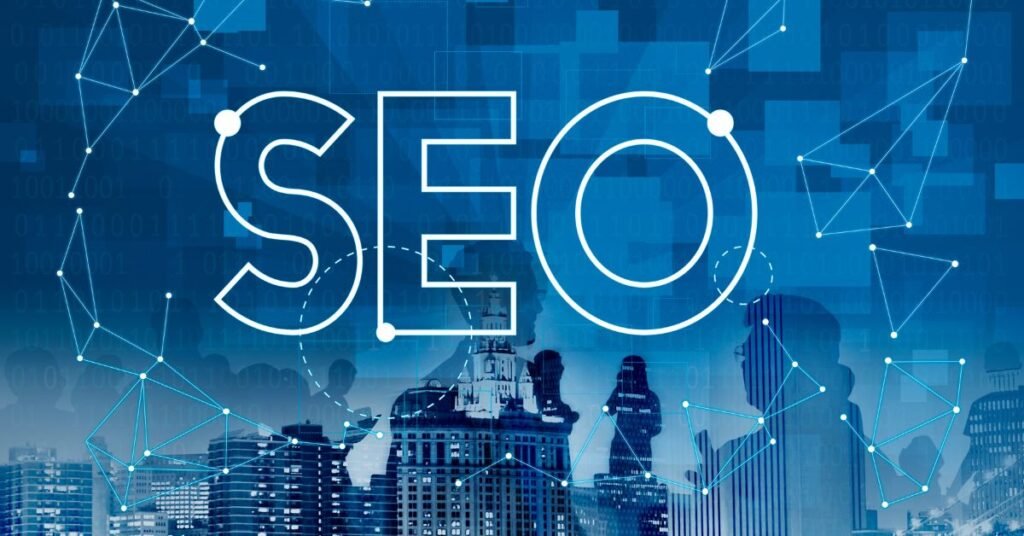NAP Consistency: The Cornerstone of Local SEO Success

Ensure local SEO success with NAP consistency, the cornerstone of effective online presence. Discover how consistent Name, Address, and Phone number boost visibility and trust.
Instagram Story Ideas: 15 Creative Ways to Boost Engagement and Connect with Your Audience

Instagram Stories have become a powerful tool for brands and individuals to engage with their audience, showcase their creativity, and build meaningful connections. With over 500 million people using Stories daily, it’s crucial to stand out with unique and non-generic content. If you’re looking for fresh ideas to elevate your Instagram Stories, here are 15 creative Instagram story ideas and concepts designed to capture attention and increase engagement. 15 Creative Instagram Story Ideas 1. Host a “This or That” Challenge Turn decision-making into fun by creating a “This or That” challenge. Present your followers with choices — from “Coffee or Tea?” to “Beach Vacation or Mountain Adventure?” — using the Instagram poll sticker. Add a twist by relating the options to your brand or personal story, such as “New Product A or New Product B?” or “Casual Look vs. Formal Look.” Encourage followers to take screenshots, share their answers, and tag you, creating an interactive experience that extends beyond your initial Story. 2. Behind-the-Scenes ‘Day in the Life’ Take your followers behind the scenes with a ‘Day in the Life’ Story. Share snippets of your daily routine, from your morning coffee to late-night brainstorming sessions. Include candid moments, challenges, and unexpected events to humanize your brand and foster relatability. Use time-lapse videos, fast cuts, or slow-motion effects to add dynamics. Ask your audience questions throughout the day, such as “What should I wear today?” or “Which design do you like best?” 3. Run a Mystery Countdown Inject excitement by creating a mystery countdown. Use Instagram’s countdown sticker, but keep the event or reveal vague. Drop subtle hints in each subsequent Story — maybe a close-up of a product, a cryptic phrase, or an unexpected emoji. This builds suspense and curiosity, encouraging followers to check back regularly to see what the surprise is. At the end of the countdown, reveal something significant — a product launch, a big announcement, or a giveaway. 4. Interactive Quizzes with Polls People love proving their knowledge or testing themselves. Create interactive quizzes related to your niche or audience interests. For example, if you run a travel blog, ask questions like “Which city is known as the Big Apple?” Use the quiz sticker for straightforward answers and add polls for questions requiring audience input. Add GIFs and animations for visual appeal and encourage followers to share their scores. 5. Story Takeover with a Twist Invite a guest to take over your Instagram Stories for a day, but make it unique by adding a twist. Ask them to share their day but through a specific theme, like “A Day in Monochrome” where they only post black and white pictures, or “All Things Blue,” where every post incorporates the color blue. Collaborate with influencers, customers, or team members and create a fun challenge that aligns with your brand ethos. 6. Create a Digital Scavenger Hunt Design a digital scavenger hunt that takes followers through multiple Stories or even across different profiles. Use clues, riddles, or mini-games to guide them from one Story to the next. Offer a prize for those who make it to the end — a discount code, exclusive content, or a free product. This not only boosts engagement but also encourages followers to explore more of your content. 7. Story Series: “How To” Tutorials Create a multi-part Story series focused on “How To” tutorials relevant to your industry. For example, a fashion brand could do a “How to Style a Scarf in 5 Different Ways,” while a fitness influencer might showcase “5-Minute Workouts for Busy Mornings.” Break down the tutorial into bite-sized videos or carousel images, each covering a step. Add text overlays for clarity, and end each Story with a CTA to swipe up for more detailed content or to check out your blog or website. 8. Share User-Generated Content with Commentary Celebrate your followers by sharing user-generated content, but add your unique spin by providing commentary or additional context. For example, if a follower shares a photo of them using your product, repost it with your thoughts — “We love how @user used our new skincare line before their big presentation!” or “Check out how @user styled our latest fall jacket with vintage accessories!” This personal touch not only validates your followers but also creates a sense of community. 9. “What’s in My Bag?” Feature Give your audience a sneak peek into your life or brand with a “What’s in My Bag?” Story. Show off your essentials — whether it’s your work bag, gym bag, or travel bag. Explain why each item is important and how it relates to your brand or lifestyle. You could also invite your audience to guess what’s inside first, and then reveal the answers in a subsequent Story. This idea is perfect for creating suspense and engagement. 10. Create ‘Choose Your Adventure’ Stories Engage your audience with a ‘Choose Your Adventure’ series where they decide what happens next in the Story. For example, present a scenario: “You’re at the airport, but your flight is delayed — do you head to the coffee shop or browse the bookstore?” Use the poll sticker for followers to choose. Based on the majority vote, the next Story continues with the selected path. This gamifies the Story experience and gives followers a sense of control. 11. Highlight Customer Testimonials Creatively Share customer testimonials, but go beyond simple screenshots. Create animated Stories using tools like Canva or Mojo, where you bring text to life with motion graphics. Pair testimonials with relevant visuals — a happy customer with your product, or a before-and-after shot. Add stickers or icons that represent emotions (like a thumbs-up or heart) to make it visually engaging. 12. Host a Live Q&A Through Stories Instead of hosting a traditional Instagram Live, use Stories to create a Q&A session. Prompt your audience to ask questions using the question sticker, then answer them in subsequent Stories with a mix of video responses, text, and GIFs. Add quick polls or quizzes related to
How to Create Impactful Social Media Ad Campaigns: Tips and Examples

Learn to create impactful social media ad campaigns with our expert tips and real-life examples. Boost engagement and drive results with effective strategies!
Developing a Winning Social Media Strategy: A Detailed Roadmap

Craft a winning social media strategy with our detailed roadmap. Discover key steps, tips, and tools to boost engagement and achieve your marketing goals.
Why is Metadata Important in Digital Marketing?

In the vast digital landscape, where content is abundant and competition fierce, the effectiveness of your digital marketing strategy can hinge on the smallest details. One such crucial detail is metadata. Often overlooked, metadata plays a pivotal role in how content is discovered, indexed, and ranked by search engines. It can also significantly influence user engagement and click-through rates. This blog delves into the importance of metadata in digital marketing, exploring its various types, benefits, and best practices for optimization. Understanding Metadata Metadata is essentially data about data. It provides information about other data, making it easier to understand, manage, and locate. In the context of digital marketing, metadata includes elements such as title tags, meta descriptions, headers, alt texts, and more. These elements offer search engines and users insights into the content of a webpage, helping to categorize and display it appropriately. Types of Metadata Title Tags Title tags are HTML elements that define the title of a webpage. They appear as clickable headlines in search engine results pages (SERPs) and are crucial for SEO and social media sharing. Meta Descriptions Meta descriptions are brief summaries of a webpage’s content. While they don’t directly influence ranking algorithms, well-crafted meta descriptions can greatly enhance click-through rates by enticing users to visit your page. Header Tags (H1, H2, etc.) Header tags are used to designate headings and subheadings within your content. They organize the content hierarchically, making it easier for both search engines and users to navigate and understand the structure of the page. Alt Text Alt text, short for alternative text, is an HTML attribute that describes the content and function of an image on a page. It is essential for accessibility and helps search engines index images accurately. URL Slugs URL slugs are the segments of a URL that identify a specific page on a website in a readable format. Well-structured URLs aid both users and search engines in understanding the content of the page. Canonical Tags These tags address duplicate content concerns by identifying the “canonical” or preferred version of a webpage. The Impact of Metadata on SEO Improved Search Engine Rankings Metadata directly influences how search engines perceive and rank your content. Title tags and headers, for instance, are critical for keyword placement. When these elements are optimized with relevant keywords, search engines can more accurately index and rank your content for relevant search queries. Enhanced Click-Through Rates Even if your page ranks well, it needs to attract clicks to be effective. Compelling title tags and meta descriptions can make your listing more appealing in the SERPs, leading to higher click-through rates. This user engagement can also indirectly boost your rankings, as search engines may interpret high click-through rates as a signal of content relevance and quality. Better User Experience Metadata improves the user experience by making your content more accessible and easier to navigate. Well-organized headers and informative alt text aid users in grasping the layout and context of your content, while clear and concise URLs clarify the purpose of each page. This improved user experience can result in increased time spent on the page and reduced bounce rates, which are favorable indicators for search engines. Metadata and User Engagement While SEO benefits are significant, metadata also plays a crucial role in user engagement. Effective use of metadata can: Increase Content Discoverability Properly optimized metadata ensures that your content is discoverable not only by search engines but also by users. For example, accurate alt text can help images appear in image search results, driving additional traffic to your site. Enhance Content Sharing Metadata such as Open Graph tags and Twitter cards can influence how your content appears when shared on social media platforms. These tags control the title, description, and image that appear in social media previews, making your content more attractive and clickable. Improve Accessibility Descriptive alt text and clear headers make your content more accessible to users with disabilities. This not only broadens your audience but also demonstrates your commitment to inclusivity, which can enhance your brand’s reputation. Best Practices for Metadata Optimization Conduct Keyword Research Successful metadata optimization begins with comprehensive keyword research. Pinpoint relevant keywords for your content and strategically weave them into your title tags, meta descriptions, headers, and alt text. Utilize tools such as Google Keyword Planner, Ahrefs, or SEMrush to discover high-value keywords. Write Compelling Title Tags Keep title tags concise (50-60 characters) and include the primary keyword at the beginning. Make them compelling and relevant to encourage clicks. Avoid keyword stuffing, as this can negatively impact user experience and search engine rankings. Craft Persuasive Meta Descriptions Meta descriptions should be approximately 150-160 characters long and incorporate the main keyword. Aim to craft an engaging summary that emphasizes the advantages of visiting your page. Use actionable language and include a call to action if appropriate. Use Headers Strategically Organize your content with clear, hierarchical headers. Use H1 tags for main titles and H2, H3, etc., for subheadings. Include relevant keywords naturally within these headers to improve SEO and readability. Optimize Alt Text for Images Write descriptive alt text for all images, incorporating relevant keywords where appropriate. Ensure the alt text accurately describes the image and its context within the content. This practice improves accessibility and helps search engines index your images. Create SEO-Friendly URLs Structure your URLs to be short, descriptive, and keyword-rich. Avoid using long strings of numbers or irrelevant characters. A clear URL structure enhances user experience and can improve search engine rankings. Implement Canonical Tags Employ canonical tags to designate the preferred version of a webpage, particularly when dealing with similar or duplicate content. This practice helps avoid duplicate content problems and clarifies for search engines which version of the page should be indexed. Conclusion Metadata is a critical component of any successful digital marketing strategy. It influences how search engines index and rank your content, impacts user engagement, and enhances the overall user experience. By understanding the various types of metadata and implementing best
SEO vs. PPC: Which Strategy Fits Your Business Best?

In the world of digital marketing, SEO and PPC are among the most influential tools for boosting online presence and attracting targeted traffic. They each have their strengths, weaknesses, and unique applications. To decide which strategy is right for your business, it’s crucial to understand the differences, benefits, and best practices for both SEO and PPC. This detailed guide will explore these aspects and provide insights on how to effectively use both strategies in your marketing mix. Understanding SEO and PPC What is SEO? SEO involves optimizing your site to secure higher rankings in organic search results on search engines like Google. This process includes on-page optimization (e.g., using relevant keywords, optimizing meta tags, and improving site structure) and off-page optimization (e.g., building high-quality backlinks and enhancing social signals). SEO seeks to enhance your website’s visibility in search engine results pages (SERPs), gradually attracting more organic traffic. What is PPC? PPC is an online marketing model where advertisers incur a cost each time their ad is clicked. Instead of organically earning visits to your site, PPC allows you to purchase traffic directly. Google Ads is one of the most popular PPC platforms, allowing businesses to display ads in Google’s search results. PPC campaigns can be targeted based on keywords, demographics, location, and more, making it a versatile tool for lead generation and increasing website traffic.Key Differences Between SEO and PPC Speed of Results SEO SEO is characterized by its gradual approach to achieving results. The timeline for seeing significant improvements in rankings can vary widely based on factors such as keyword competitiveness and your website’s existing status. Generally, it can take several months to a year to secure and sustain high positions in search engine results pages (SERPs). SEO is inherently a long-term strategy, demanding continuous effort and optimization to maintain and enhance performance. PPC In contrast, PPC campaigns offer the advantage of immediate results. Once your ads are activated, they can start driving traffic to your website almost instantly. This immediacy makes PPC a valuable tool for businesses seeking rapid visibility and lead generation. However, it’s important to note that once the advertising budget is exhausted, the influx of traffic ceases. Cost SEO Though SEO demands a considerable investment of time and resources, it often proves to be more cost-effective over the long term. Once your website ranks well organically, you can continue to receive traffic without ongoing costs per click. However, maintaining high rankings requires continuous effort in terms of content creation, link building, and technical optimization. PPC PPC involves paying for every click on your ads, which can add up quickly, especially in competitive industries. The cost per click (CPC) can vary widely depending on the keywords and targeting options. While PPC can be expensive, it provides precise control over your budget and can be scaled up or down based on performance. Nature of Traffic SEO: Organic traffic generated through SEO is generally more sustainable and credible in the eyes of users. Since SEO focuses on providing valuable content and a good user experience, it can build long-term trust and authority for your website. PPC: Traffic from PPC campaigns is more immediate and can be highly targeted, which is great for lead generation. However, it might not always have the same level of trust as organic traffic because users know it’s paid advertising. SEO: A Long-Term Investment Benefits of SEO Sustainable Results: Once your website secures top rankings, it can sustain these positions through ongoing optimization and updates. This results in a steady stream of organic traffic without the need for continuous financial investment. Credibility and Trust: Organic search rankings often lend greater credibility and trustworthiness to a website. High rankings enhance your brand’s reputation and establish its authority within your industry, making your business more appealing to potential customers. Better ROI Over Time: Although SEO requires an initial investment, it can deliver a better return on investment (ROI) in the long run compared to PPC, especially for businesses in less competitive niches. Challenges of SEO Time-Consuming: Reaching top search engine rankings requires a considerable investment of time and consistent effort. For businesses seeking immediate results, this prolonged process can be a significant challenge. Algorithm Changes: Search engines frequently update their algorithms, which can impact your rankings. Staying informed about the latest SEO trends and best practices is crucial for maintaining your visibility and adapting to these changes effectively. Best Practices for SEO Keyword Research: Discover the keywords your target audience is actively searching for. Utilize tools such as Google Keyword Planner, Ahrefs, or SEMrush to pinpoint keywords that offer an optimal mix of search volume and competition. High-Quality Content: Develop content that is informative, and engaging, tailored to meet the needs and interests of your audience. Integrate your target keywords naturally into your content to enhance its relevance. Technical Optimization: Ensure your website is technically robust, featuring fast load times, mobile responsiveness, and a well-organized structure. Enhance SEO performance by optimizing meta tags, headers, and images. Link Building: Acquire high-quality backlinks from reputable websites in your industry. Focus on building relationships with influencers and publishing guest posts on relevant blogs. PPC: Quick and Targeted Traffic Benefits of PPC Immediate Results: PPC campaigns can start driving traffic to your website almost instantly, making it ideal for businesses looking for quick visibility and lead generation. Targeted Advertising: PPC offers precise targeting capabilities, letting you choose specific keywords, demographics, locations, and even times of day. This detailed targeting ensures that your ads are shown to the most relevant audience, helping you optimize your advertising budget effectively. Measurable ROI: PPC campaigns provide detailed metrics and analytics, allowing you to track performance and adjust your strategies based on real-time data. Challenges of PPC Cost: PPC can be costly, especially in competitive industries. High CPCs can quickly eat into your budget, and you need to continuously invest to keep driving traffic. Short-Term Impact: Once you stop paying for ads, the traffic stops. Unlike SEO, PPC doesn’t provide long-term benefits unless
Content Mapping: A Comprehensive Guide to Optimizing Your Content Strategy

Optimize your content strategy with our comprehensive guide to content mapping. Learn to align your content with customer journeys for maximum impact.
Beyond Basics: How SEO Agencies in the USA are Shaping the Future of Digital Marketing

In the rapidly evolving digital marketplace, the role of SEO agencies in the USA has become indispensable. With search engine algorithms constantly changing and consumer behavior shifting, businesses need more than just basic SEO techniques to stand out. This blog will explore the distinctive value that SEO agencies bring, how to identify the right agency for your business, and why partnering with a skilled SEO agency can be a game-changer for your online strategy. Understanding the Unique Value of SEO Agencies Tailored SEO Strategies for Diverse Industries SEO agencies in the USA are adept at crafting strategies that are tailored to the specific needs of different industries. For instance, an agency working with a tech startup will approach SEO differently than one working with a local restaurant. They conduct indepth market research and competitor analysis to design a strategy that aligns with industry trends and target audience behavior. This bespoke approach ensures that the SEO tactics are not only effective but also relevant to the business’s niche. Advanced Tools and Technologies Top SEO agencies utilize cutting-edge tools and technologies to drive results. These include advanced keyword research tools, analytics platforms, and SEO software that provide insights into search trends, competitor strategies, and website performance. Agencies often have access to premium tools that small businesses might not afford, offering a competitive edge in optimizing website performance and tracking ROI. Data-Driven Decisions A key feature of a top-performing SEO agency is its commitment to data-driven decision-making. These agencies leverage detailed analytics to evaluate the success of their strategies, track keyword performance, and measure user engagement. This approach allows for continuous optimization by making informed adjustments based on insights from metrics like bounce rates, click-through rates, and conversion rates. Through rigorous analysis, agencies refine their strategies to better align with client goals and drive superior results. Choosing the Right SEO Agency Assessing Industry Expertise When selecting an SEO agency, it’s crucial to evaluate their experience in your specific industry. Agencies that have worked with businesses similar to yours will understand the unique challenges and opportunities within your sector. For example, an agency with experience in e-commerce SEO will be familiar with strategies for product listings, customer reviews, and site structure that are essential for online retail success. Integration with Emerging Technologies Forward-thinking SEO agencies are integrating their strategies with emerging technologies like Augmented Reality (AR) and Virtual Reality (VR). For example, a real estate agency might use AR to create interactive property tours, which can then be optimized for search engines. This integration ensures that businesses can capitalize on the latest tech trends, offering an immersive and engaging experience to their audience. Evaluating Transparency and Communication Effective communication is key to a successful partnership with an SEO agency. Ensure that the agency provides regular updates, clear reports, and is transparent about their methods and results. A good agency will offer a detailed plan and set realistic expectations for deliverables and timelines. They should also be open to discussing strategies and making adjustments based on your feedback. Benefits of Partnering with a Forward-Thinking SEO Agency Future-Proof Strategies Partnering with an innovative SEO agency means adopting strategies that are not just effective today but are also adaptable to future changes. These agencies anticipate shifts in search engine algorithms and user behavior, allowing businesses to stay ahead of the competition and maintain a robust online presence. Enhanced User Engagement By leveraging cutting-edge technologies and unique strategies, these agencies enhance user engagement and experience. Whether it’s through personalized content, voice search optimization, or immersive tech, the focus is on creating a more engaging and interactive experience that drives higher user satisfaction and retention. Maximized ROI Innovative SEO strategies lead to more efficient use of marketing resources and higher returns on investment. By targeting specific audiences with precision and utilizing advanced tools, businesses see better results from their SEO efforts, translating into increased traffic, higher conversion rates, and greater overall success. Conclusion SEO agencies in the USA are not just keeping up with digital trends; they are setting them. By incorporating AI, voice search optimization, hyperlocal targeting, and emerging technologies, these agencies are redefining the future of SEO. Choosing the right agency means partnering with experts who are not only skilled in traditional SEO but also at the forefront of innovation. For a strategic edge in the competitive digital landscape, connect with Media Ace Marketing and explore how our forward-thinking approach can transform your online presence. Ready to future-proof your SEO strategy? Contact Media Ace Marketing today and let’s create a tailored plan to drive your success.
Navigating the SEO Spectrum Understanding the Difference Between Black Hat and White Hat SEO

In the vast and ever-evolving landscape of digital marketing, Search Engine Optimization (SEO) stands as one……..
Unlocking the Power of Programmatic SEO A Comprehensive Guide

In the ever-evolving landscape of digital marketing, Search Engine Optimization (SEO) stands as ……….
